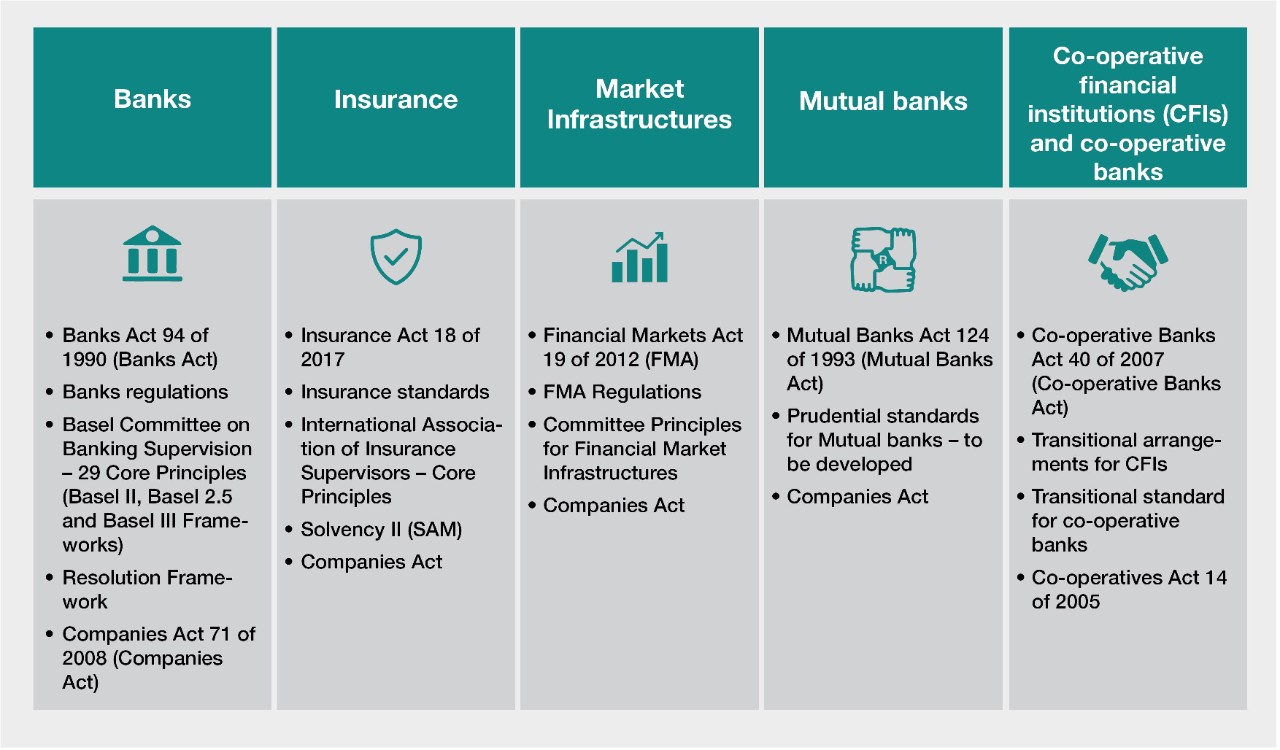

Finance
What Does COB Mean In Insurance?
Published: November 18, 2023
Discover what COB means in insurance and how it impacts your finances. Gain insights into this important aspect of insurance coverage.
(Many of the links in this article redirect to a specific reviewed product. Your purchase of these products through affiliate links helps to generate commission for LiveWell, at no extra cost. Learn more)
Table of Contents
Introduction
When it comes to insurance, there are several terms and acronyms that may seem confusing. One such term is COB, which stands for Coordination of Benefits. COB plays a crucial role in ensuring that individuals with multiple insurance coverage receive the maximum benefits available to them.
COB is a process used by insurance companies to determine the order in which different insurance policies pay for healthcare services. It ensures that the total amount reimbursed does not exceed the actual cost of the medical expenses, thereby preventing overpayment.
Understanding COB is essential for policyholders who have multiple insurance plans, such as those who are covered under both their own employer’s plan and their spouse’s plan. It helps determine which policy is primary and which is secondary, so that claims are processed correctly and individuals receive the benefits they are entitled to.
In this article, we will delve deeper into the concept of COB in insurance, exploring its functioning, importance, and other key details. By the end, you will have a solid understanding of how COB works and why it matters for your insurance coverage.
Understanding COB in Insurance
Coordination of Benefits (COB) is a process used by insurance companies to determine how multiple insurance policies will work together when covering the same healthcare expenses. This is necessary in cases where an individual is covered under more than one insurance plan, such as through their employer and their spouse’s employer.
The purpose of COB is to prevent duplicate payments and ensure that the total reimbursement does not exceed the actual cost of the medical services received. It establishes a clear order of coverage between primary and secondary insurers, reducing the burden on policyholders and minimizing the potential for out-of-pocket expenses.
COB determines which insurance plan is primary and which is secondary. The primary insurer is responsible for processing the claim first and paying the eligible expenses up to the policy limits. The secondary insurer then picks up the remaining costs that are not covered by the primary insurance. This process ensures that the policyholder receives the maximum benefits available to them from both policies.
It is important to note that COB does not increase the total reimbursement provided by the insurance companies. Instead, it redistributes the responsibility between insurers to avoid overpayment and ensure fair coverage for the policyholder.
COB rules and regulations vary depending on the type of insurance plans involved, such as group health insurance, Medicare, Medicaid, or other government programs. Different insurance companies may also have their own specific COB guidelines that must be followed.
Next, we will explore how the COB process works, shedding light on the coordination between primary and secondary insurers.
How COB Works
The COB process involves several steps to determine the order of coverage and ensure that the policyholder receives the maximum benefits available from their multiple insurance policies. Here is an overview of how COB works:
- Identification of the primary insurer: The first step is to identify the primary insurer. This is usually determined based on specific criteria, such as the policyholder’s employment status or their relationship to the primary policyholder (e.g., being a dependent on a parent’s plan). The primary insurer is responsible for processing the claim first.
- Submission of the claim: The policyholder submits the claim to the primary insurer, providing all necessary documentation and information regarding the healthcare services received.
- Processing the claim by the primary insurer: The primary insurer reviews the claim and pays the eligible expenses according to the policy provisions and coverage limits. They will also generate an explanation of benefits (EOB) statement, detailing the amount paid and any remaining balance.
- Notification to the secondary insurer: Once the primary insurer has processed the claim and made their payment, they will notify the secondary insurer about the claim. This prompts the secondary insurer to start coordinating the benefits.
- Submission of the claim to the secondary insurer: The policyholder then submits the claim, along with the EOB from the primary insurer, to the secondary insurer. They must provide any additional information required by the secondary insurer to facilitate the coordination process.
- Processing the claim by the secondary insurer: The secondary insurer reviews the claim and pays the eligible expenses, considering the amount already paid by the primary insurer. They will take into account the policy provisions and coverage limits of their plan.
- Total reimbursement determination: After both the primary and secondary insurers have processed the claim, the total reimbursement is determined. This is the combined amount paid by both insurers, which should not exceed the actual cost of the healthcare services received.
The COB process ensures a systematic approach to coordinating benefits and prevents policyholders from being overpaid or underpaid. It streamlines the payment process between multiple insurers, providing clarity and transparency for all parties involved.
In the next section, we will explore the importance of COB in insurance and how it benefits policyholders.
Importance of COB in Insurance
Coordination of Benefits (COB) is of paramount importance in the insurance industry, especially for individuals who have multiple insurance plans. Here are some key reasons why COB matters:
- Prevents overpayment: COB ensures that policyholders are not reimbursed more than the actual cost of the healthcare services received. By coordinating benefits between primary and secondary insurers, it avoids duplication of payments and helps control healthcare costs.
- Maximizes coverage: COB allows policyholders to maximize their insurance coverage by combining benefits from multiple policies. This ensures that they receive the highest possible reimbursement for their medical expenses.
- Reduces out-of-pocket expenses: Without COB, policyholders may be left to shoulder a larger share of the healthcare costs. By coordinating benefits and determining the order of coverage, COB helps minimize out-of-pocket expenses and provides financial relief.
- Promotes fairness: COB ensures that each insurance policy contributes its fair share towards covering the healthcare expenses. It prevents one policy from paying for services that should be covered by another, ensuring a fair distribution of responsibilities between insurers.
- Clarifies claims processing: COB guidelines provide clarity and structure in the claims processing system. It establishes a clear order in which claims are handled, eliminating confusion for both policyholders and insurance companies.
- Streamlines reimbursement: By following the COB process, insurers can streamline the reimbursement process. This leads to faster and more efficient claims processing, which benefits policyholders by reducing delays in receiving their benefits.
- Protects against fraud: COB helps detect and prevent fraudulent activities by cross-referencing claims across multiple insurers. It ensures that only legitimate claims are paid and helps mitigate the risk of fraudulent practices.
Overall, COB plays a critical role in optimizing insurance coverage and protecting policyholders from undue financial burden. It establishes a framework for fair and efficient coordination of benefits, ensuring that individuals receive the maximum benefits available to them from their multiple insurance policies.
In the next section, we will explore some examples of how COB works in practice.
COB Examples
To better understand how Coordination of Benefits (COB) works in practice, let’s consider a few examples:
Example 1: John is employed and covered under his employer’s group health insurance plan, while his wife Sarah has coverage under her employer’s plan. John undergoes a surgical procedure that results in $5,000 in medical expenses. Since John is the primary policyholder, his insurer will process the claim first and cover the eligible expenses up to the policy limits. The remaining balance will then be submitted to Sarah’s insurance as the secondary insurer for coordination of benefits.
Example 2: Mary is retired and covered under Medicare as her primary insurance. She also has secondary coverage through her former employer’s retiree health plan. Mary incurs $2,000 in medical expenses. Medicare, as the primary insurer, will process the claim first and pay for the eligible expenses based on its coverage. The remaining balance will then be submitted to Mary’s retiree health plan as the secondary insurer for coordination of benefits.
Example 3: Lisa is a dependent child covered under both of her parents’ insurance plans. Her primary coverage is with her father’s plan, while her mother’s plan is secondary. If Lisa has a medical expense of $3,000, her father’s insurance will process the claim first and cover the eligible expenses up to the policy limits. The remaining balance will then be submitted to Lisa’s mother’s insurance for coordination of benefits.
These examples demonstrate how COB allows for the correct determination of primary and secondary insurance, ensuring that the policyholder receives the maximum benefits available from their multiple insurance policies. By following the COB guidelines, insurers can coordinate their efforts, contributing to a fair and effective reimbursement process.
Next, let’s explore the different types of COB that exist within the insurance industry.
COB Types
Coordination of Benefits (COB) can vary depending on the types of insurance plans involved. Different insurance programs and policies have their own guidelines for determining the order of coverage. Here are some common types of COB:
- Non-duplication: Under this type of COB, the secondary insurer will only pay the remaining balance after the primary insurer has processed the claim. The secondary insurer will not duplicate any payments made by the primary insurer, ensuring that the total reimbursement does not exceed the actual cost of the medical expenses.
- Maintenance of benefits: With maintenance of benefits COB, the primary insurer pays its portion of the claim first, and then the secondary insurer will pay additional benefits to maintain the same level of coverage as if there were no other insurance involved. This type of COB is typically seen in cases involving a retiree health plan or Medicare as the primary insurer.
- Carve-out: Carve-out COB occurs when specific healthcare services or expenses are designated to be covered by one insurance plan, while the remaining services are covered by another plan. For example, dental services may be carved out to a separate dental insurance policy, separate from the primary health insurance.
- Order of benefits: Order of benefits COB determines the sequence in which multiple insurance policies pay their share of the healthcare expenses. This could be based on the birthday rule (where the policy of the individual with the earliest birth month is considered primary) or other guidelines specified in the insurance contracts.
- Third-party liability: Third-party liability COB comes into play when there is another party responsible for the medical expenses, such as in cases of accidents or injuries caused by a third party. The primary insurer typically pays first, and any remaining balance may be covered by the secondary insurer or the responsible third party.
It’s important to note that the specific COB rules and types can vary between insurance companies and plans. Policyholders should familiarize themselves with the COB guidelines provided by their insurance companies to understand how their multiple insurance policies will coordinate benefits.
Next, let’s explore the coordination process involved in COB.
COB Coordination Process
The coordination process in Coordination of Benefits (COB) involves several steps to ensure that multiple insurance policies work together to provide seamless coverage for policyholders. Here is an overview of the COB coordination process:
- Identification of primary and secondary insurers: The first step in the coordination process is to identify the primary and secondary insurers. This is determined based on specific rules, such as the policyholder’s employment, relationship to the primary policyholder, or other eligibility criteria.
- Claim submission: The policyholder submits the claim to the primary insurer, providing all necessary documentation and information about the medical services received.
- Primary insurer’s processing: The primary insurer reviews the claim, processes it, and pays the eligible expenses up to the policy limits. They generate an explanation of benefits (EOB) statement that details the amount paid and any remaining balance.
- Notification to the secondary insurer: Once the primary insurer has processed the claim, they notify the secondary insurer about the claim and the amount paid. This triggers the coordination of benefits process with the secondary insurer.
- Secondary insurer’s processing: The secondary insurer reviews the claim, taking into account the EOB from the primary insurer. They determine the remaining balance that needs to be covered and process the claim accordingly, subject to their own policy limits and coverage provisions.
- Coordination and payment: The coordination process ensures that the total reimbursement received does not exceed the actual cost of the medical services. The primary and secondary insurers work together to coordinate their payments, redistributing the responsibility to avoid overpayment.
- Policyholder responsibility: After the coordination process, the policyholder may be responsible for any remaining balance not covered by the insurance. This could include deductible, copayments, or services that are not covered under the insurance policies.
The COB coordination process helps streamline the payment process between multiple insurers, ensuring that the policyholder receives the maximum benefits available from their policies. It provides clarity and transparency, reducing confusion and delays in claims processing.
In the next section, we will explore the benefits of COB in insurance.
Benefits of COB in Insurance
Coordination of Benefits (COB) provides several benefits for policyholders who have multiple insurance coverage. Understanding and utilizing COB effectively can enhance their insurance experience in the following ways:
- Optimized utilization of coverage: COB ensures that policyholders can make the most out of their insurance coverage. By coordinating benefits, they can access the maximum benefits available from their primary and secondary insurers, minimizing their out-of-pocket expenses.
- Financial relief: COB helps reduce the financial burden on policyholders. It limits their out-of-pocket expenses by ensuring that insurance companies work together to cover eligible healthcare costs. This can be especially valuable in cases of high medical bills or unexpected medical events.
- Clear order of coverage: COB provides a structured order of primary and secondary coverage. This clarity helps policyholders understand which insurance company is responsible for processing the claim first and which one will cover any remaining balance. It eliminates confusion and ensures a streamlined claims processing experience.
- Protection against overpayment: COB plays a crucial role in preventing overpayment for healthcare services. By coordinating benefits between insurers, it ensures that the total reimbursement received by the policyholder does not exceed the actual cost of the medical expenses, minimizing potential financial waste.
- Faster claims processing: COB promotes efficient claims processing. By following the coordination process, insurers can work together to process claims more quickly, reducing potential delays in reimbursement for policyholders. This can be particularly beneficial in urgent or time-sensitive medical situations.
- Fair distribution of responsibility: COB ensures that insurers contribute their fair share in covering the policyholder’s medical expenses. It prevents one insurer from bearing the entire burden while the other goes unutilized. This fair distribution of responsibility helps maintain a balance between primary and secondary insurers.
- Reduced administrative effort: COB simplifies the claims process for policyholders. Rather than having to manage multiple claims and navigate the complexities of multiple insurance policies, COB streamlines the coordination between insurers. This reduces the administrative effort required by the policyholder to handle claims.
Overall, COB is a beneficial process that helps policyholders maximize their insurance coverage, minimize out-of-pocket expenses, and ensure fair and efficient claims processing. Understanding and leveraging COB can lead to a more positive insurance experience for individuals with multiple insurance plans.
In the next section, we will discuss the limitations and factors that can impact COB in insurance.
Limitations of COB in Insurance
While Coordination of Benefits (COB) offers numerous advantages in managing multiple insurance coverage, it also has certain limitations that policyholders should be aware of. These limitations can impact the coordination process and the overall insurance experience. Here are some key limitations of COB in insurance:
- Complexity of coordination: COB can become complex when multiple insurers are involved, each with their own policies and guidelines. Determining the order of coverage, submitting claims to the correct insurers, and coordinating benefits can be challenging and time-consuming.
- Varying COB rules: Different insurance plans may have different COB rules, making it difficult to navigate and understand the coordination process. It requires careful review of policy documents and communication with insurance companies to ensure proper implementation of COB guidelines.
- Potential for delayed reimbursements: The coordination process between insurers can sometimes lead to delays in reimbursements. This can happen when insurers need to review and verify coordination information, resulting in a longer processing time for the policyholder to receive their benefits.
- Inadequate coverage for non-covered services: COB focuses on coordinating benefits for covered healthcare services. However, it may not address situations where certain services are excluded or not covered under any insurance policy. Policyholders may still be responsible for the costs of these non-covered services.
- Policy limitations and exclusions: Each insurance policy has its own set of limitations and exclusions, which can impact the reimbursement process. Policyholders should carefully review their insurance policies to understand any restrictions or exclusions that may affect the coordination of benefits.
- Requirement for coordination information: COB requires policyholders to provide coordination information, such as explanation of benefits (EOB) statements, to the secondary insurer. Failure to provide this information accurately and in a timely manner may lead to reimbursement complications.
It’s important for policyholders to familiarize themselves with the limitations of COB and work closely with their insurance providers to navigate the coordination process effectively. Understanding the potential challenges and seeking clarifications can help mitigate any issues that may arise during the coordination of benefits.
In the next section, we will explore the factors that can influence the coordination of benefits in insurance.
Factors Affecting COB
Coordination of Benefits (COB) is influenced by several factors that can impact the way multiple insurance plans work together. Understanding these factors is crucial for policyholders to navigate the COB process effectively. Here are some key factors that can affect COB in insurance:
- Type of insurance plans: Different types of insurance plans, such as group health insurance, Medicare, Medicaid, or private individual plans, can have varying COB rules and guidelines. It’s important for policyholders to understand the COB requirements specific to their insurance plans.
- Policyholder’s relationship: The relationship of the policyholder to the primary policyholder can impact COB. For example, dependents on an employer-sponsored plan may have different COB rules compared to the primary policyholder.
- Employment status: Whether the policyholder is actively employed, retired, or unemployed can influence COB. Retiree health plans or COBRA continuation coverage may have different COB rules compared to employee-sponsored plans.
- Birth date: In cases where two policies cover children of parents, the birthday rule may be used to determine the primary insurer. The policyholder with the earlier birth month in the calendar year usually becomes the primary insurer.
- Policy provisions and limitations: The coverage provisions, limitations, and exclusions outlined in each insurance policy can impact the coordination of benefits. Understanding these provisions is crucial to determine the extent of coverage from primary and secondary insurers.
- Third-party liability: In situations involving third-party liability, such as accidents or injuries caused by someone else, coordination of benefits may be affected. The responsibility and coordination between primary and secondary insurers may vary based on the circumstances and policies involved.
- Verification of coverage information: Accurate and timely submission of coordination information, such as explanation of benefits (EOB) statements, is essential. Insurance companies rely on this information to process claims correctly and determine the appropriate coordination of benefits.
These factors highlight the complexity and variability in COB based on different insurance plans, policies, and individual circumstances. Policyholders should consult their insurance providers, carefully review their policy documents, and communicate any changes or updates that may impact their coordination of benefits.
Next, we will conclude with a summary of the key points discussed in this article.
Conclusion
Coordination of Benefits (COB) is a fundamental aspect of insurance that ensures individuals with multiple insurance coverage receive the maximum benefits available to them. By coordinating benefits between primary and secondary insurers, COB helps prevent overpayment, minimize out-of-pocket expenses, and optimize insurance coverage.
In this article, we explored the concept of COB in insurance and its importance in managing multiple insurance plans. We discussed how COB works, the types of COB that exist, and the coordination process involved in determining the order of coverage. Furthermore, we highlighted the benefits of COB, including optimized utilization of coverage, financial relief, and a clear order of coverage.
We also discussed the limitations of COB, such as potential complexities in coordination, variations in COB rules, and potential delays in reimbursements. Additionally, we explored the factors that can impact COB, such as the type of insurance plans, policyholder’s relationship, employment status, and policy provisions.
Understanding COB and navigating the coordination process is essential for policyholders to effectively utilize their insurance coverage. By familiarizing themselves with COB guidelines, policyholders can ensure fair and efficient claims processing, minimize out-of-pocket expenses, and maximize their benefits from multiple insurance policies.
It is recommended that policyholders carefully review their insurance policies, communicate with their insurance providers, and seek clarification when needed. By doing so, they can navigate through the coordination process smoothly and make the most out of their insurance coverage.
To sum up, COB serves as a crucial mechanism in the insurance industry, ensuring policyholders receive fair and adequate coverage when multiple insurance plans are involved. By understanding and leveraging COB effectively, individuals can enhance their insurance experience and achieve greater financial protection in the face of healthcare expenses.














